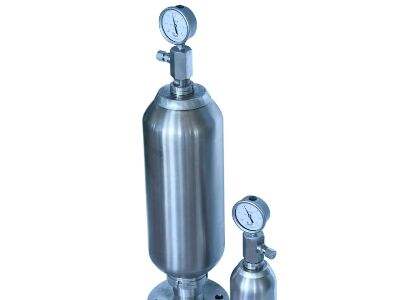If we’re talking about storing energy, they could use one of these devices, called an accumulator, to keep everything running smoothly. Have you heard of different types of accumulators? In this article, we are going to look at the 5 best types of accumulators to help you choose the best option for you.
Various Types of Accumulator
Accumulators will vary in form and size. There are particular advantages and features of each type. Here’s the rundown of the five major types of accumulators:
Diaphragm Accumulator: Such an accumulator separates the hydraulic fluid and the gas by means of a flexible component referred to as diaphragm. This allows quick energy storage and release.
Piston type accumulator Piston type accumulators use a piston which segregates the fluid from the gas. They are strong and respond swiftly.
Bladder Accumulator Bladder accumulators keep the gas and fluid separate with a rubber bladder. They’re ideal for high-pressure scenarios.
Spring Accumulator: The spring accumulator charges the spring, storing energy. They also tend to be smaller and are often cheaper, which can be good if you have a smaller system.
Weight Accumulator: Weight accumulators are used to store energy, and are operated under the influence of gravity. They excel at low-pressure applications with little room for the aerobic bugs.
Selecting the Right Accumulator
When selecting an accumulator for your system, consider factors like pressure, flow rate, and how much room you have. Here’s what to keep in mind:
Systems that require high flow rates and fast response benefit from diaphragm accumulators.
Piston accumulators work well in high-pressure systems that must be compact.
Bladder accumulators are ideal when pressure parameters fluctuate frequently.
Spring accumulators are ideal for smaller systems with restricted budgets and space.
Weight accumulators are fine for low pressure, when you want something really nice and simple and trust able.
Advantages of the Two Types of Accumulator
Every type of accumulator has unique advantages that can help your system perform better. Here are some advantages:
Diaphragm accumulators are rapid acting and are good at handling flow rates.
Powerful piston accumulators and a fast release of the energy.
For example, a bladder accumulator separates gas and fluid, thereby enabling efficient energy storage.
No, because spring accumulators are compact and inexpensive for energy storage.
Weight pneumatic accumulator are inexpensive and reliable at low pressures.
Comparing Accumulator Options
While comparing various types of accumulators, you should also consider the efficiency, reliability, and maintenance of the accumulator. Here’s a list of the top 5 types when measured based on these criteria:
Diaphragm accumulators are highly efficient and durable, with only minimal maintenance required.
Piston accumulators are also efficient and durable, but they may require more maintenance due to moving parts.
There is low to moderate maintenance for the bladder and excellent reliability and efficient operation for the bladder accumulators.
Simple and reliable, spring diaphragm accumulator don’t ask for much in the way of maintenance.
Loading hoppers of dead weight are highly durable, have very little maintenance and are therefore very inexpensive for low pressure hopper applications.
Choosing the Best Accumulator for Your Needs
The best accumulator for your system will depend on what your requirements are. Understanding the different types of hydraulic accumulator and their benefits can help you make an educated decision and make your system operate more effectively. We have an accumulator that meets your need for fast flow rates, rapid response or compact design. Choose wisely and see your system excel with the proper accumulator.



